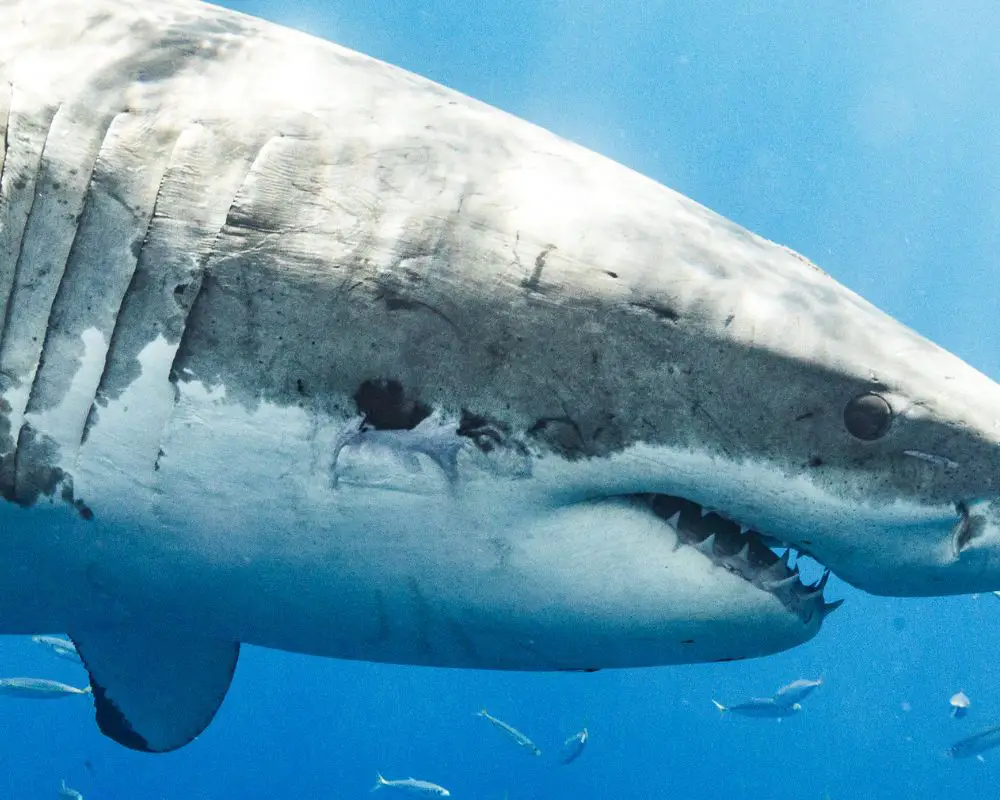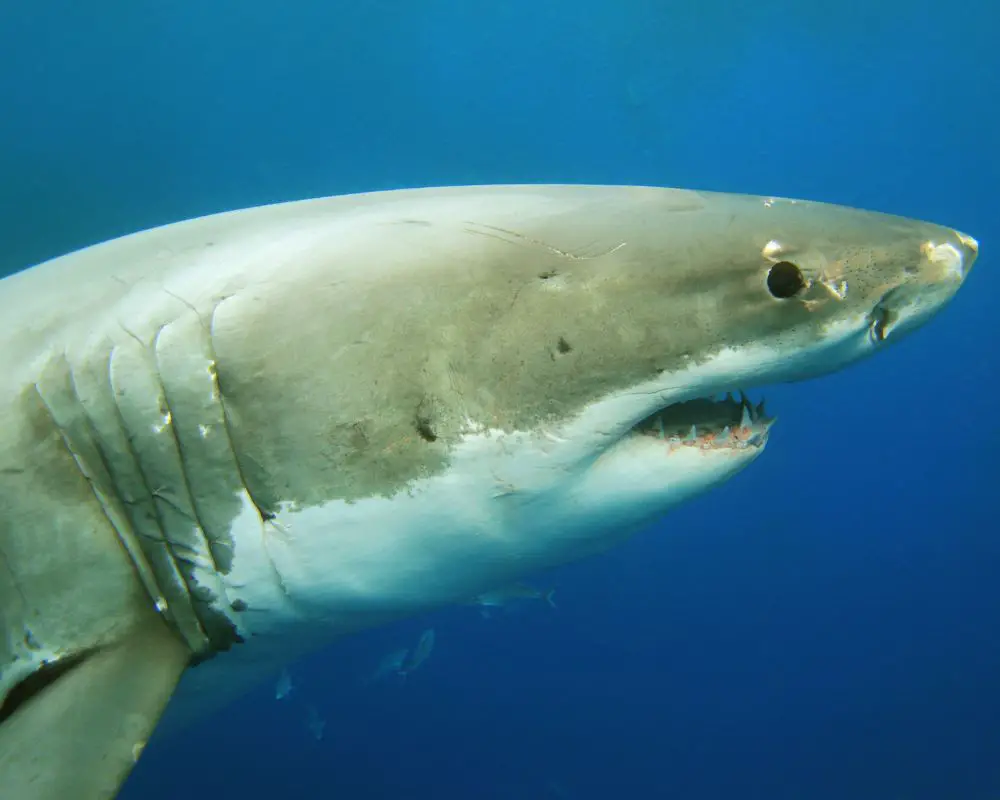Have you ever wondered how great white sharks breathe underwater? These apex predators have captured our imaginations for decades with their incredible power and stealth, but few of us understand the science behind their respiratory system. In this blog post, we’ll take a deep dive into the fascinating world of great white shark respiration, exploring how they extract oxygen from water and remove metabolic waste to survive in their ocean habitat.
But first, let’s take a moment to appreciate the majesty of these creatures. With their sleek bodies, sharp teeth, and powerful tails, great white sharks are one of the most iconic animals in the world. They’re also one of the most misunderstood, often portrayed as mindless killing machines in popular media. But as we’ll see in this post, great white sharks are much more than that. They’re finely-tuned predators that have evolved over millions of years to thrive in their environment.
The Respiratory System of Great White Sharks

Great white sharks, like all fish, use gills to extract oxygen from water. However, their respiratory system is unique and has evolved to meet the demands of their environment.
Description Of The Respiratory Organs
Gill Slits
Great white sharks have five to seven pairs of gill slits located on the sides of their head. Each gill slit is covered by a gill cover, or operculum, which helps to protect the gills. Inside the gill slits are the gill arches, which support the gill filaments.[1]
Gill Filaments
The gill filaments are the site of gas exchange, where oxygen from the water is extracted and carbon dioxide is released. Each filament is made up of numerous thin lamellae, which increase the surface area for gas exchange. The lamellae are covered in tiny blood vessels, called capillaries, which allow for the exchange of gases between the water and the shark’s blood.
Gill Rakers
Great white sharks also have gill rakers, which are bony projections located on the gill arches. The gill rakers help to filter out food particles and other debris from the water before it reaches the gill filaments.
Explanation of How the Respiratory Organs Work Together
1. Water Flow Over The Gills
The respiratory organs of great white sharks work together to facilitate respiration. Water flows over the gills through the mouth and over the gill covers. As water passes over the gill filaments, oxygen is extracted and carbon dioxide is released through the process of diffusion. The oxygen is then transported throughout the shark’s body by the circulatory system.
2. Exchange Of Gases (Oxygen And Carbon Dioxide)
The movement of water over the gills is critical for efficient respiration. Great white sharks have a specialized system called a counter-current exchange system, which helps to maximize the oxygen extraction from water. This system works by ensuring that the water flowing over the gills is always in the opposite direction to the blood flow in the gill filaments. This allows for the highest possible concentration gradient between the water and the blood, maximizing the amount of oxygen that can be extracted.
3. Removal Of Metabolic Waste
In addition to the counter-current exchange system, great white sharks also use buccal pumping to help move water over their gills. Buccal pumping involves pumping water into the mouth and then forcing it out through the gills, which creates a constant flow of water over the respiratory organs.
Overall, the respiratory system of great white sharks is finely tuned to extract oxygen from water and remove metabolic waste efficiently. Through their unique adaptations, these apex predators have evolved to thrive in their ocean habitat.
The Breathing Process of Great White Sharks

The breathing process of great white sharks is a fascinating and complex system that has evolved over millions of years. Here is a breakdown of the steps involved:
1. Water Is Taken In Through The Mouth
Great white sharks breathe by taking water in through their mouths. As they swim forward, their mouths act like scoops, funneling water into their oral cavity.
2. Water Passes Over The Gill Covers
Once water enters the oral cavity, it passes over the gill covers, which protect the gill slits.
3. Oxygen Is Extracted From The Water
As water passes over the gill filaments, oxygen is extracted and carbon dioxide is released through the process of diffusion. The oxygen is then transported throughout the shark’s body by the circulatory system.
4. Counter-Current Exchange System
Great white sharks have a specialized system called a counter-current exchange system, which helps to maximize the oxygen extraction from water. This system works by ensuring that the water flowing over the gills is always in the opposite direction to the blood flow in the gill filaments. This allows for the highest possible concentration gradient between the water and the blood, maximizing the amount of oxygen that can be extracted.
5. Water Is Expelled Through The Gill Slits
After passing over the gill filaments, water is expelled through the gill slits on the sides of the shark’s head.
6. Buccal Pumping
Great white sharks also use buccal pumping to help move water over their gills. Buccal pumping involves pumping water into the mouth and then forcing it out through the gills, which creates a constant flow of water over the respiratory organs.
7. Efficient Waste Removal
As the oxygen is extracted from the water, metabolic waste, such as carbon dioxide, is also removed through the gills. This process ensures that the shark’s body is constantly supplied with oxygen and that waste is efficiently removed.
The Unique Adaptations of Great White Sharks’ Respiratory System
Great white sharks have evolved several unique adaptations to their respiratory system that allow them to breathe efficiently while hunting and surviving in their ocean environment. Here are some of their unique adaptations:
1. Continuous Swimming
Unlike most bony fish, great white sharks cannot pump water over their gills while they are stationary. They have to swim continuously to force water over their gills and breathe. This is why great white sharks are known as obligate ram ventilators.
2. Buccal Pumping
As mentioned earlier, great white sharks use buccal pumping to move water over their gills. This allows them to extract oxygen from the water even when they are not swimming forward.
3. Gill Rakers
Great white sharks have gill rakers, which are comb-like structures that protrude from the gill arches. These structures help to filter out larger particles, such as plankton and small fish, from the water before it passes over the gill filaments.
4. Large Gills
Great white sharks have large gills that allow them to extract more oxygen from the water. Their gill surface area is estimated to be about 5-6 times greater than that of similarly sized bony fish.
5. Counter-Current Exchange System
As mentioned earlier, great white sharks have a specialized counter-current exchange system that allows them to extract the maximum amount of oxygen from the water. This system is so efficient that great white sharks can extract up to 80% of the oxygen from the water they breathe.
6. Efficient Removal Of Carbon Dioxide
Great white sharks have a high tolerance for carbon dioxide and can efficiently remove it through their gills. This allows them to stay underwater for longer periods of time while hunting.
FAQs
Can Great White Sharks Breathe Without Moving?
Great white sharks are obligate ram breathers, which means that they need to continuously swim in order to ventilate their gills and extract oxygen from water. They cannot breathe without moving as their gills are not designed to extract oxygen from still water.
How Long Can A Great White Shark Hold Its Breath?
As for the second question, great white sharks can hold their breath for a relatively long time, but the exact duration is difficult to determine as it can vary depending on several factors such as the shark’s size, activity level, and water temperature. In general, it is believed that great white sharks can hold their breath for up to 15 minutes, although some individuals may be able to hold their breath for longer periods of time. However, great white sharks typically do not hold their breath for extended periods as they need to constantly swim to breathe.

Hi, I’m Ali Tarek, the founder of Animalsman. I’ve always been passionate about pets, especially dogs and cats, and I created this website to share practical tips, easy recipes, and helpful care advice for fellow pet lovers. My goal is to make pet care simple, enjoyable, and accessible for everyone. When I’m not writing or curating content, you’ll usually find me spending time with my furry friends or learning new ways to keep them happy and healthy.



